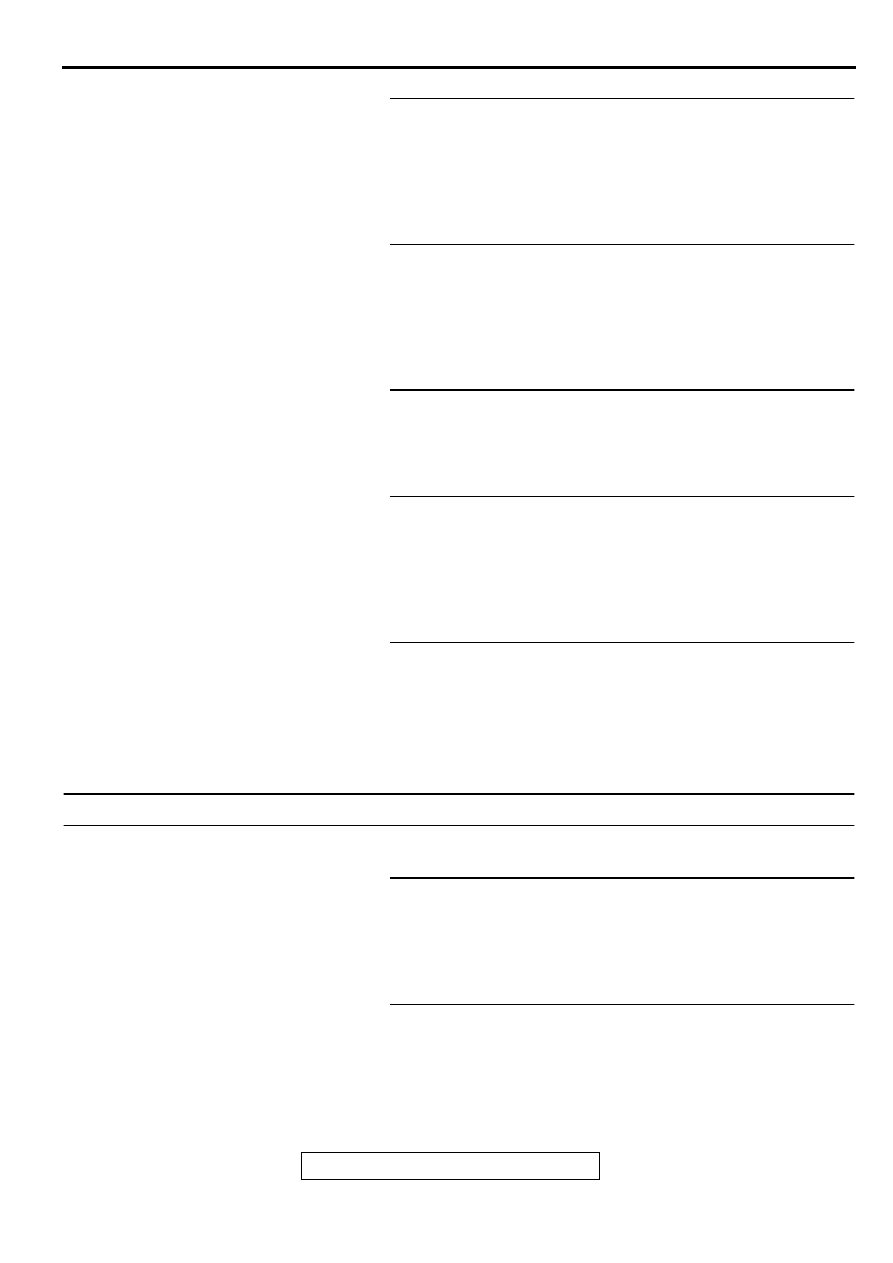Mitsubishi Galant. Manual - part 505

BASIC BRAKE SYSTEM DIAGNOSIS
TSB Revision
BASIC BRAKE SYSTEM
35A-11
STEP 6. Check the clearance (too low) between the
pushrod and primary piston.
Refer to
.
Q: Is there fault?
YES : Adjust the clearance. Then go to Step 10.
NO : Go to Step 7.
STEP 7. Check the master cylinder piston return spring for
damage and return port for clogging.
Refer to
.
Q: Is there damage?
YES : Replace the part. Then go to Step 10.
NO : Go to Step 8.
STEP 8. Check port for clogging.
Q: Is the port clogged?
YES : Repair it. Then go to Step 10.
NO : Go to Step 9.
STEP 9. Check disc brake pistons for sticking.
Depress the brake pedal, then release. Confirm each wheel
spins freely.
Q: Are all wheels stuck?
YES : Inspect that brake assembly. Then go to Step 10.
NO : Go to Step 10.
STEP 10. Recheck symptom.
Q: Is the symptom eliminated?
YES : Diagnosis is complete.
NO : Start over at step 1. If a new symptom surfaces, refer
to the symptom chart.
INSPECTION PROCEDURE 5: Scraping or grinding noise when brakes are applied
DIAGNOSIS
STEP 1. Check the front brakes, then rear brakes, for
metal-to-metal condition.
Q: Is the metal-to-metal contact evident?
YES : Repair or replace components. Then go to Step 6.
NO : Go to Step 2.
STEP 2. Check for interference between the caliper and
wheel.
Q: Is there interference?
YES : Repair or replace the part. Then go to Step 6.
NO : Go to Step 3.